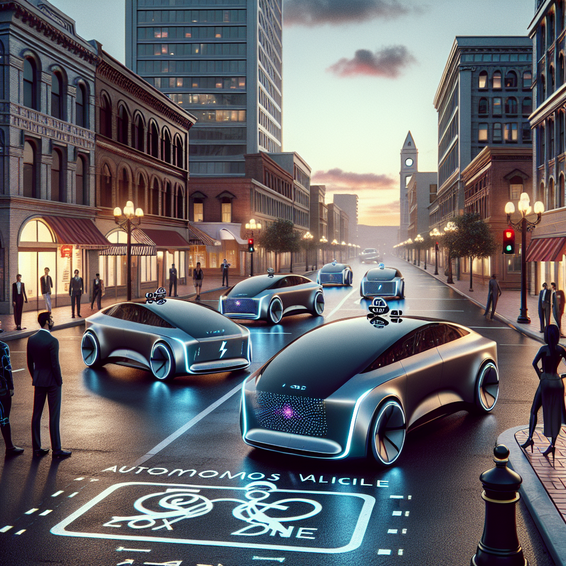As Tesla advances its Robotaxi initiative, the world of autonomous transportation stands on the cusp of a revolution. Elon Musk’s ambitious vision promises to transform urban mobility, introduce new business models, and accelerate the AI-driven future of transport. However, with innovation comes skepticism and a need for robust safety measures, as the latest developments in the autonomous vehicle sector demonstrate both promise and challenge.
The Rise of Tesla Robotaxis
Tesla’s Robotaxi project centers around the Cybercab, an autonomous vehicle designed to deliver fully self-driving ride-hailing services. The company has invested billions to position itself as a leader in the future of urban mobility. Still, this bold push has generated both excitement about the possibility of safe and convenient driverless transport—and doubt about the readiness of today’s AI technology to deliver on those claims. Some critics warn that if Tesla’s promises aren’t met, it could shake public trust in autonomous vehicles as a whole.
Reference: Tesla’s Robotaxi Could Self-Drive Your Faith in Autonomous Cars Right Off a Cliff – Gizmodo.
Read more | Gizmodo
Competing Technologies: The Case for Radar and Lidar
While Tesla has famously emphasized camera-based perception for its Full Self-Driving Suite, rivals like Waymo showcase a different approach. Waymo’s robotaxis blend cameras, radar, and lidar to create a ‘superhuman sensing ability.’ Radar detects objects and people even when cameras would be blocked—for instance, a pedestrian hidden behind a bus. Lidar adds further precision, especially in low-visibility scenarios, helping robotaxis safely predict and respond to emerging hazards. This sensor diversity highlights one of the most critical debates in autonomous system design: is a vision-only system enough, or is sensor fusion essential for maximum safety?
Reference: Waymo shows how radar and lidar help its robotaxis see what cameras can’t – Business Insider.
Read more | X (Twitter)
Regulatory Headwinds: Calls to Delay in Austin
Regulatory scrutiny is also intensifying. In Austin, Texas, local lawmakers have asked Tesla to delay its Robotaxi launch until after new autonomous vehicle regulations take effect in 2025. Their concerns center on public safety and the readiness of Tesla’s tech, reinforcing the idea that technical progress must be accompanied by regulatory and societal buy-in. Until automakers can convincingly demonstrate the safety of these systems, large-scale rollouts could face further delays or restrictions.
Reference: Texas lawmakers ask Tesla to delay robotaxis in Austin – Business Insider.
Read more | Teslarati
Analysis: Key Lessons for the IT and Mobility Industry
Tesla’s Robotaxi project reveals several lessons for the IT industry and business leaders:
- Trust is fragile: Early missteps by high-profile players can undermine public faith in new technologies.
- Sensor diversity matters: Camera-only approaches may lag behind multi-sensor fusion in safety-critical scenarios.
- Regulation is catching up: Companies must engage proactively with legislators to shape—and comply with—emerging autonomous vehicle regulations.
- Public safety over speed: Rushing rollout without comprehensive field validation can stall long-term adoption and industry growth.
The success or failure of Tesla’s Robotaxi will serve as a benchmark for autonomous mobility worldwide, impacting investment, regulation, and consumer perception for years to come.
Actionable Steps for IT Professionals
If you’re leading IT, data, or security strategy in a business affected by autonomous mobility, consider these best practices to mitigate risks and accelerate readiness:
- Invest in multi-modal sensor data analysis: Use sensor fusion algorithms combining camera, radar, and lidar where possible for critical applications.
- Strengthen cybersecurity: Protect autonomous platforms with robust security protocols, strong passkeys, and 2FA for system access and OTA software updates.
- Monitor regulatory developments: Build compliance frameworks around evolving local and federal safety standards for autonomous vehicles.
- Institute rigorous validation processes: Leverage digital twins, simulation environments, and phased road testing to demonstrate system reliability before launching at scale.
Leading IT solutions include advanced data analytics for real-time sensor processing, dedicated AI safety auditing tools, zero-trust security stacks, and scalable cloud infrastructure for over-the-air updates and remote diagnostics.
Related Reading from 404NotScott
- A Beginner’s Technical Roadmap: Leveraging LLMs in 2025
- What Is AI Reasoning?
- Why Organizations Need Vertical LLMs Over Horizontal LLM – Unlocking Industry-Specific AI Value
Conclusion: The Road Ahead
The journey to fully autonomous robotaxis like Tesla’s Cybercab is just beginning. The technology’s potential is transformative, but so too are the stakes. By balancing pioneering innovation with rigorous validation, regulatory collaboration, and a commitment to safety, the IT and automotive industries can enable the autonomous future we all envision—one ride at a time.
